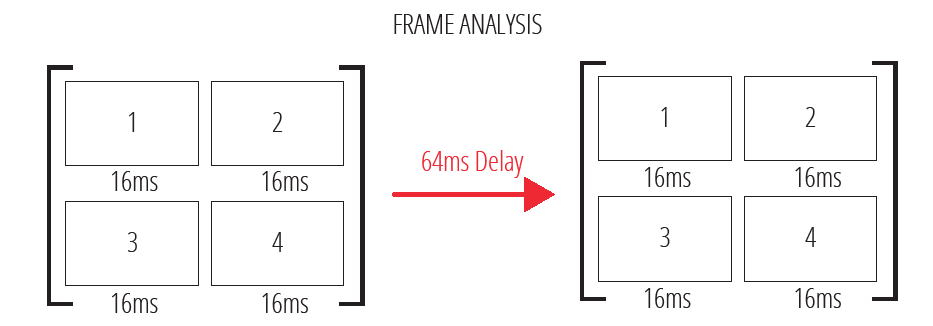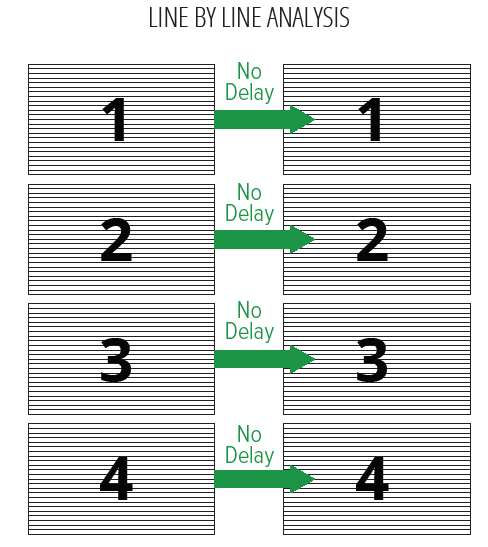
Control Room professionals strive to continually enhance their decision-making processes by collecting, distributing, and visualizing the ever-increasing amounts of available data without any visual latency. In turn, this provides complete 360°situational awareness, helping operators and their stakeholders make optimal assessments of the situation. A KVM system is undoubtedly the heart of many control rooms and operation centers in government, health care and industrial applications, and it is essential that it offers the lowest latency performance possible.
Therefore, to help you make the right choices when selecting your next mission-critical KVM over IP system, we have created this handy four-point guide:
How low is "low latency" and why does it matter?
AV and video solutions normally measure their performance in frames with a performance of one or two frames (approximately 0.03 seconds) being deemed acceptable. The difference with a KVM is even this level of latency would be totally unacceptable, as it would mean that a control room operator wouldn’t be able to efficiently control their workstation due to mouse lag.
Therefore, we measure KVM performance in milliseconds (ms) with the best systems offering less than 5ms (0.005 seconds). Ideally a solution offering performance of around 1ms (0.001 seconds) is preferred. It is worth noting that not all KVM systems offer this performance. Some KVM systems operate at 64ms (0.064 seconds), a level of performance that would not even be acceptable on an AV video processor!
Why does latency differ among KVM over IP solutions?
KVM over IP offers benefits for the ease of integration, scalability, and the convenience of remote access. However, the main hurdle has been how to maintain quality with low latency over the available IP bandwidths. For example, typically 1Gbit networks have been used for HD end points, but with a full HD image requiring a bandwidth of 3.5 Gbit/s, it’s obvious some form of compression is needed, which can result in poor image quality or unacceptable latency.
Two commonly used methods include:
Frame analysis:

Many KVM over IP solutions use a conventional AV compression where each image is only analyzed and transmitted after 4 frames. This method results in an overall delay of 64ms and can introduce noticeable visual artefacts.
Line by line analysis:

This superior transmission method provides near lossless video performance where each line of an image is analyzed and transferred immediately, resulting in near zero-latency. Another benefit includes flicker and shutter-free performance at the operator workstation.
How do I evaluate the latency of a KVM over IP system?
Without having access to expensive, high-end test equipment, it is an impossible task to scientifically measure video latency in a KVM over IP solution. What makes this even more challenging is that we need to measure this performance in milliseconds rather than frames.
What might surprise you is that the human eye is highly adapted to seeing latency. This combined with a normal level of hand/eye coordination will help you assess system performance.
First, select a PC that you want to control from your operator workstation and use your mouse to control the PC/MAC application. Does what you are seeing not quite match up? Can you feel a lag? If so, the performance is above 5 milliseconds which is the maximum we normally feel as usable.
Next, if the KVM has the feature, switch the view to see four PC’s on a single display. You may already be seeing issues as quad source operation can often by reduced to only refresh a few times per second. If this is not the case, and you are seeing a normal level of screen refresh, repeat the mouse usability test in the quad-screen mode.
Want to find out more?
Magenta is a long-term, proven expert in KVM, signal extension and distribution solutions for medical, higher-education, government,and broadcast installations globally. Their custom, in-house solutions, have been developed over three decades and are guaranteed to deliver high-quality, low-latency performance. Magenta Pathfinder is a high-performance KVM over IP system that offers zero-latency performance and high-quality images in all modes of operation.
To find out more, please fill out the form below to download the full version (PDF) of this blog.
